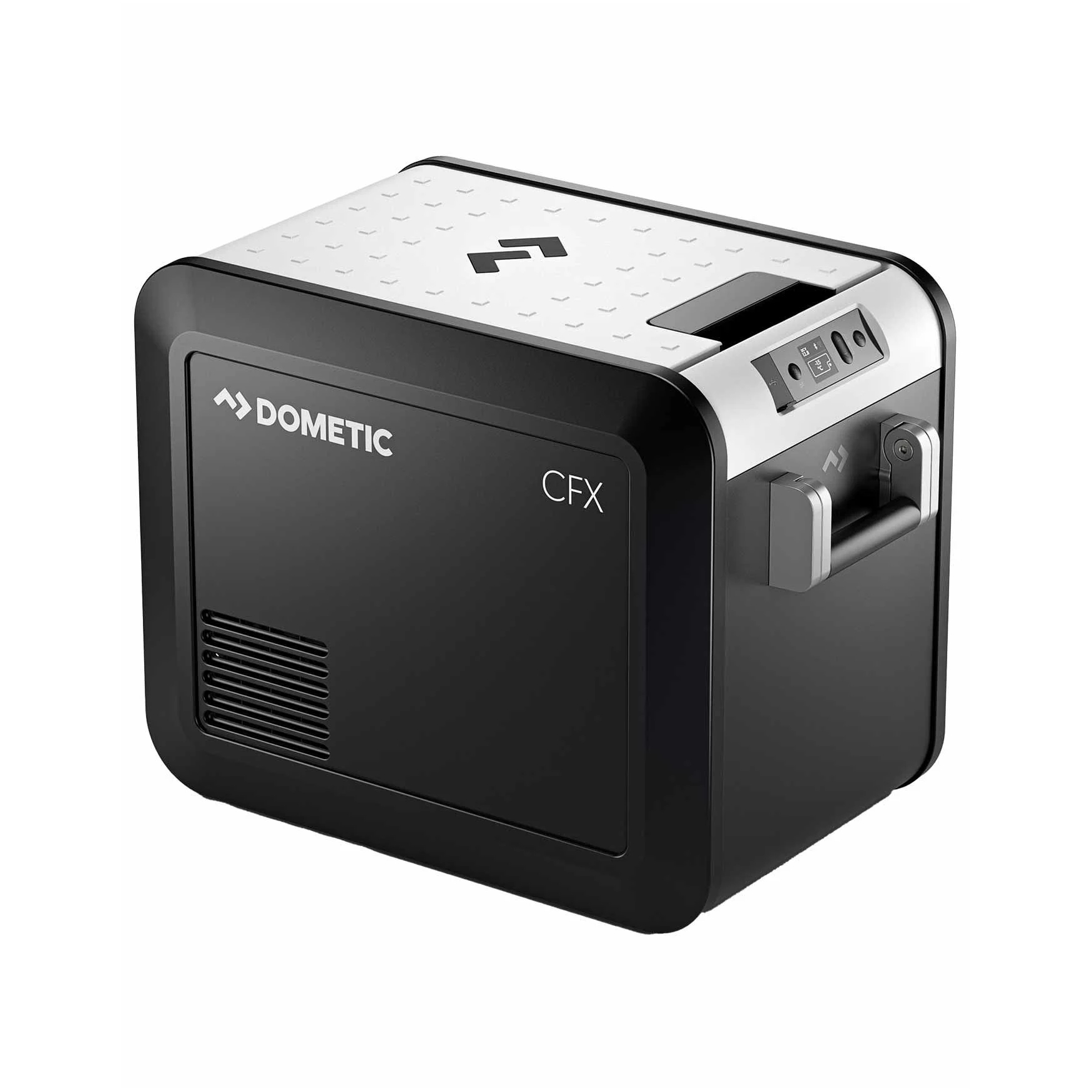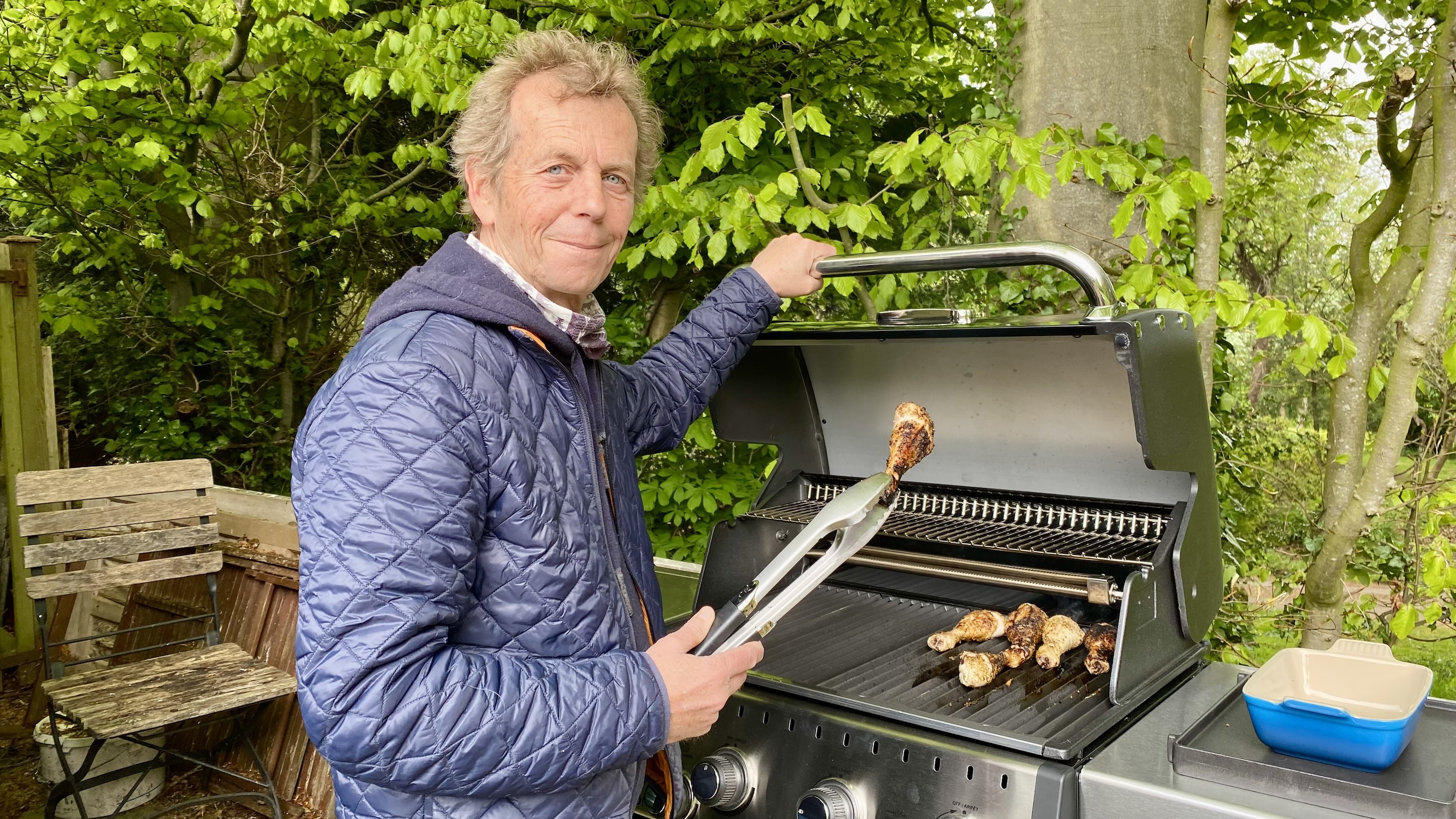Best cooler for camping 2025: keep your food and drinks cool and fresh
Browse the best cool boxes, cool bags and electric coolers for camping, festivals, picnics and balmy days at the beach

Derek Adams

Whether you're a seasoned camper looking to upgrade your cooling solution, gearing up for your first outdoor excursion or planning a picnic or beach BBQ, finding the best cool box is essential for keeping your food and drinks fresh and nicely chilled.
In this guide, we've evaluated and ranked the top cool box, cool bag and electric camping cooler options available today, ensuring you make the right choice for your outdoor needs. Car campers and outdoor enthusiasts alike can benefit from investing in reliable cooling receptacles to safeguard perishable goods during winter adventures.
From convenient day trips to summer gatherings, these versatile cooling solutions are indispensable for any outdoor activity, ensuring your refreshments stay chilled and ready for enjoyment.
Pair your chosen cool box with the best camping chairs and best tent, and you'll be well-equipped for a refreshing day under the sun, no matter the season. Looking for affordable YETI products? Head over to T3's best YETI coolers and best YETI sales and deals roundups.

The Coleman 50QT Xtreme Cooler impresses with its exceptional insulation, keeping items cold for days, making it perfect for extended outdoor adventures. Its durability and large capacity make it a reliable choice for camping and festivals, despite its hefty size.

The Hydro Flask Day Escape is a well-designed, easy-to-carry soft cooler bag with impressive 36-hour insulation and sturdy construction. Though pricier and narrower than some might prefer, its quality and thoughtful features make it ideal for day trips and longer adventures.

The Dometic CFX3 25 camping cooler offers exceptional cooling performance, reaching -22°C, and is versatile, durable, and easy to use. Although expensive, it’s ideal for those seeking reliable temperature control and robust build quality for camping or home use.
Best cool box for camping to buy right now
The best camping cool boxes


Specifications
Reasons to buy
Reasons to avoid
Coleman’s monster 47-litre passive cool box on wheels has a durable and weatherproof design and earns a place in the best camping cooler ranking, partly thanks to its solid, rugged build. The Coleman 50QT is designed to keep food and drink fresh and cold for up to four days, making it an excellent choice for long weekend camping trips.
The lid features PU foam insulation, taking care of the cooling, and four cup holders for housing your bottles and cans. It'll also double as a makeshift camping seat and will support up to 113kg in weight. The only real downside is that according to the official guidelines, you'd need to add more than 13 kilos of ice for best performance, which would put a not-insignificant dent in the space left for food and drink.
Read our full Coleman 50QT Xtreme camping cooler review


Specifications
Reasons to buy
Reasons to avoid
The Yeti Roadie 24 Cooler is a well-engineered and super-rugged portable cool box that's just the ticket for keeping beers and food chilled outdoors. The interior has been proportioned to ensure it'll hold a bottle of wine, stood up (important), and Yeti encourages you to use it as a stool. In fact, it even sells an accessory cushion for that very purpose.
Thick rotomoulded walls, dubbed the Yeti ‘Fatwall’, and PermaFrost insulation are responsible for the chilling. That same rotomoulded construction makes this timeless ice chest nigh-on indestructible, so it’ll withstand the rough and tumble of outdoor life. It is slightly tricky to carry over long distances, but it's a solid choice for road trips, boating, car camping and short-haul picnics.
Read our full Yeti Roadie 24 cooler review.


Specifications
Reasons to buy
Reasons to avoid
The Bunker 66L Cool Box is a no‑nonsense cooler, delivering near‑Yeti performance at a notably lower price, making it a must‑consider for rugged outdoor use.
Its rotomoulded construction, sturdy interlocking latches, stainless‑steel lockable points (which double as bottle openers), tyre‑covered wheels, tie‑down anchors, drainage plug, non‑slip feet, and even an interior compass underscore the cooler’s practical, adventure‑ready design.
Our field test in central Wales confirmed its insulation prowess, keeping cans near‑frozen for two days in a hot car with remaining ice after a longer trip, validating the brand’s claim of five‑day ice retention.
That said, the cooler’s 18 kg empty weight (rising to 30–40 kg when filled) and requirement for large amounts of ice are potential drawbacks, especially for those lacking access to commercial ice sources.
Its sober beige aesthetic won’t win style points, but the dry, “no‑sweat” exterior even doubles as a usable seat or impromptu picnic bench.
Read our full Bunker 66L Cool Box review.
The best cool bags


1. Hydro Flask Day Escape Soft Cooler Pack
Specifications
Reasons to buy
Reasons to avoid
From the brand that brought you some of the best hiking water bottles comes this cool bag tote that's perfect for day trips. The Hydro Flask Day Escape is a soft cool bag that's altogether much easier to tote about than a boxy cool bag with short straps. There is a hand-carry option, but there's also a removable cross-body strap that works perfectly with the tapered shape for carrying it comfortably over long distances. It's at the pricier end of things, but the build quality is impeccable, and there's reassuring attention to detail on the design front.
It delivers impressive insulation for such a thin, pliable bag – with ice, it'll keep the contents cool for up to a whopping 36 hours. Hydro Flask has added thicker insulation in the base, where most heat is lost. The sturdier flattened off-base also gives some structure and extra protection where packing is concerned, although you obviously can't bash it around like you could a solid plastic option, and a few customers commented they'd prefer if it were slightly wider. Watertight and welded seams ensure no water gets in or out on your travels, and if you need more space, there's also a 20L and 26L version.


2. Outwell Penguin cool bag
Specifications
Reasons to buy
Reasons to avoid
The Outwell Penguin is sturdier than your average cool bag, thanks to 2cm thick foam walls. While this does mean you can't squish it down when not in use, it also makes it very easy to stack food inside, ensuring that it is well protected from getting squished. It will also keep said food cool for 13 hours if you add an 800ml ice block. We've been testing one out this summer, and even without the ice block, it has some impressive insulation powers.
Elsewhere, it's a simple but effective design. The inner is easy to wipe clean, and you can zip the whole top open like a lid, to easily access and shuffle around what's inside. Twin handles with a velcro-fastening grip enable easy upright carrying, and the zip pulls have wide, easy-grip plastic pulls. It feels high quality, and two mesh side pockets make for a useful place to pop any extra bits and bobs, like bottle openers. Finally, it's available in three sizes to suit different situations and party sizes.


3. Yeti Hopper Flip cool bag
Specifications
Reasons to buy
Reasons to avoid
The brand is better known for its hard coolers, but Yeti's Hopper Flip cool bag range is also well worth a look. They're robust, well-designed, and the quality you'd expect for an admittedly premium price tag. A thick layer of closed-cell rubber foam between the outer case and inner lining locks cool air effectively, and the entire top opens up (this is the 'Flip' part) for easy access to the bag's contents. Carrying is comfy thanks to an ultra-squishy rubber padding on the removable shoulder strap (there are also hand handles elsewhere for shorter distances).
The high-density 'DryHide Shell' blocks UV rays and repels mildew, and will withstand plenty of bumps and scrapes, while the 'Hydrolok' zip keeps liquid in reliably. Daisy chain loops down the front and back give you somewhere to attach any extra bits and bobs for your trip. There are three sizes to choose from, and instead of litre capacity, Yeti tells you what each will hold – the Hopper Flip 8 (pictured) is the smallest and will hold 8 cans or equivalent, based on a 2:1 ice-to-can ratio. In the middle of the range is the Hopper Flip 12, which holds 13 cans, while the Hopper Flip 18 holds 20 cans.
The best electric camping cooler


Specifications
Reasons to buy
Reasons to avoid
If you need more than just a cooler, the Dometic CFX3 25 is the next best thing to taking your fridge and freezer camping with you. It's an active cooler, which means that you'll have to hook it up to your car battery to keep things chilly, but it features a dynamic battery protection system that'll prevent it from sucking the life out of your vehicle.
With 25 litres of storage, there's plenty of room inside, however, it can get very cold in there (down to -22°C), and anything touching the sides is likely to freeze; there's an internal basket to prevent this, but you'll still need to take care when you're packing a lot in. It's easy to use, either via its touchscreen or an app, and it feels solid and sturdy – a good thing, considering its price.
Read our full Dometic CFX3 24 review


Specifications
Reasons to buy
Reasons to avoid
While the Anker EverFrost 30 Powered Cooler may not be essential for everyone, those who prioritise keeping their food and beverages chilled and have the means to transport it alongside their family will find its cooling capabilities invaluable. While lifting the unit may require some effort, its transport wheels and EasyTow suitcase-style handle make manoeuvring it a breeze, especially when utilising a ramp.
Admittedly, the price point of the Anker EverFrost series may give some pause, particularly when compared to passive coolers. However, for those who prefer the convenience of not having to sift through a pool of melted ice and salad leaves to retrieve their beverages, the EverFrost 30 Powered Cooler proves to be a superior solution.
Read our full Anker EverFrost 30 Powered Cooler review.


3. DC/AC Electric 24 L Coolbox
Specifications
Reasons to buy
Reasons to avoid
With both a car battery and electric hook up adapter, the DC/AC Electric 24 L Coolbox ensures that your precious bacon rashers, sausages and beers remain cool for the entire length of your trip.
Like all electric cool boxes, it's on the heavy and bulky side, and here the capacity is on the small side compared to other camping coolers in the list. However, if you require a reliable means to keep your food cool you can’t really go wrong. That said, if you’re looking to hook it up to your car battery intermittently throughout your trip, you may want to make sure your car is up to the job first – a jump start exit from the campsite probably won’t be your finest hour.
Honourable mentions
The EcoFlow Glacier is a premium off-grid fridge/freezer boasting dual-zone cooling and an integrated ice maker that produces cubes in ~20 minutes. With a hefty 23 kg build and a steep price tag (depending on the battery and solar pack), it offers kitchen-grade performance outdoors. However, its plug-in battery runtime is limited, at roughly 6 hours under full load, versus EcoFlow’s claimed 40 hours, which marks it as a luxury gadget rather than a budget workhorse.
Reviewer panel

Matt looks after T3's outdoor vertical, which includes all things camping, hiking, trail running and more. He's an avid camper, and if he happens to car camp, Matt'll always have a cool box ready with goods. He curates this guide with the help of expert outdoor writers.

Derek can be found outdoors more often than indoors. He loves camping, walking, and flying drones, and sometimes he combines all three into epic trips. He tested many of the coolers listed here.
How to choose the best camping cool box for you
There are plenty of sizes, styles and cooling methods on the market. First, you want to decide whether a cool box or a cool bag is better. The former will keep food protected from getting squashed but tends to be bulkier and harder to carry (although some come with wheels and telescopic handles to make the job easier). The latter might be cheaper and easier to tote around, so a better option if you're walking long distances with your cooler.
Most basic coolers use 'passive cooling', which means they're insulated to stay cold as long as possible – you'd usually pop frozen ice packs, loose ice or gel packs in to get it cold to start with. It won't keep things cool indefinitely, though, so if you're on a multi-day trip, you'll need to replace the ice (campsites often have a service where you can swap your defrosted ice packs for frozen ones).
If you're car camping and going on an extended holiday where an electric hookup is available and weight isn't an issue, you might want to invest in either an electric camping cooler or a 12v compressor fridge. Bear in mind that there is a big difference between the two.
An electric cooler box will cool between 15˚C and 25°C below the ambient temperature so, for instance, if the cooler is in a tent with an ambient temperature of 35˚C (typical for French campsites), the coolest the box will ever be is around 10˚C and that’s too warm to keep a pint of milk fresh. In fact, any meat and dairy products will likely go off within 36 hours.
Conversely, a compressor-based camping fridge will keep food and beverages at a home-fridge temperature of 3˚C and lower, and that means meats and dairy products will remain fresh for the entire duration of your camping trip. Not for nothing are compressor fridges much more expensive than standard electric cooler boxes.
If you don't drive and will be heading to the campsite, park or beach on foot or via public transport, you'll want a camping cooler that's lightweight, weatherproof (in case it rains) and easy to carry. In that case, look for a cool box on wheels with a pull-along handle or a cool bag that can be slung over your shoulder or worn like a backpack. Shoppers in the US, especially, might be focused on one brand in particular, and to that end, we've got a separate guide to the best Yeti coolers.
How we tested these cool boxes and bags
T3's expert team of outdoor gear testers selflessly tested the best cool boxes and bags on the market to see which would keep their drinks and perishables for the longest time. Factors such as capacity, ease of transport, cost, and style were also analysed during the review process.
Our testing process usually involves taking the coolers on camping trips and other outings, equipping them with a thermometer, and checking their temperature changes over time. We only test coolers for cold retention, even though most of them can keep items warm, too, just like thermos flasks.
Even though we don't throw the products around, they are subjected to real-world usage, which does involve some rough handling, and storing and moving them on uneven/abrasive surfaces. We always double-check manufacturer claims on durability and cold retention as best as we can.
Get all the latest news, reviews, deals and buying guides on gorgeous tech, home and active products from the T3 experts

Matt Kollat is a journalist and content creator who works for T3.com and its magazine counterpart as an Active Editor. His areas of expertise include wearables, drones, fitness equipment, nutrition and outdoor gear. He joined T3 in 2019. His byline appears in several publications, including Techradar and Fit&Well, and more. Matt also collaborated with other content creators (e.g. Garage Gym Reviews) and judged many awards, such as the European Specialist Sports Nutrition Alliance's ESSNawards. When he isn't working out, running or cycling, you'll find him roaming the countryside and trying out new podcasting and content creation equipment.